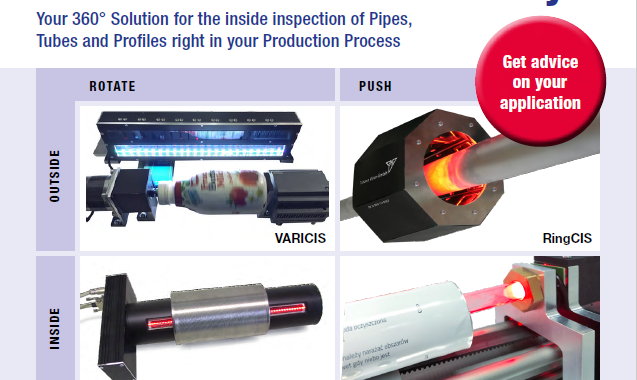4 methods for the inspection of pipes, tubes and profiles
Tichawa Vision offers five CIS products for the inspection of tubes, pipes and profiles.
Inspection on the outside:
Why CIS? There are a lot of Line Scan Camera solutions available for image acquisition of rotating objects. However, if you want to inspect a pipe with a length of 6 m, you need 5-6 line scan cameras. The setup of these becomes time-consuming quickly. If you use contact image sensors, you only need one or two sensors, which are very easy to set up. The working distance of the standard VUCIS is 10mm. This means that the sumptuous space required for the camera system is much smaller. If you need a longer working distance or if you need a higher depth of field because of the rough surface, you can use the BDCIS, which offers up to 70mm depth of field at a working distance of 100mm.
For very long or endless profiles we recommend the RingCIS. The RingCIS is a Contact Image Sensor that has been bent into a “ring”. With this acquisition technique, the object is pulled through the CIS without rotation. In this process, the sensor scans the surface of the object line by line all around (360°) without gaps.
Inspection on the inside:
Inspecting the inside of a tube or profile is even a bigger challenge than inspecting the outside. Since there is usually not enough space inside the profile to accommodate a standard CIS, we have developed a CIS with a special construction, the TubeCIS. The TubeCIS is a very slim CIS in a round housing that also fits into objects with a small diameter. It is available in two different diameters, 29mm for small tubes and 18mm for even smaller tubes. The requirement for image acquisition is a rotating object.
In case the object does not rotate, there is finally our latest product, the BoroCIS. This product is mainly used for inspecting the inside of tubes. A small pipe is inserted into the tube and so the inner side of the tube is scanned. With an additional option, it is also possible to scan the bottom of the tube. It works for pipes with diameters down to 10mm.
